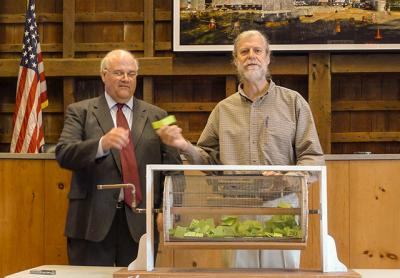Cohen Petitions for Primary
Cohen Petitions for Primary
Zach Cohen, who is seeking to run for a seat on the East Hampton Town Board on the Democratic Party ticket, filed a petition with the Suffolk County Board of Elections on Tuesday to participate in a primary election that would be held on Sept. 12. Mr. Cohen’s petition has 835 signatures; 353 were required.
The East Hampton Town Democratic Committee formally nominated its candidates for townwide offices on May 17, passing over Mr. Cohen in favor of Kathee Burke-Gonzalez, a Democrat on the town board who is seeking re-election, and Jeffrey Bragman, an attorney and newcomer to politics. Barring a successful legal challenge to Mr. Cohen’s petition, a primary among the three candidates, and any others who filed a petition for candidacy, is likely.
Mr. Cohen, of Springs, ran a close race for town supervisor in 2011, losing to Bill Wilkinson, the incumbent, by just 15 votes.
“Collecting signatures over the past month required building a new organization of committed volunteers,” Mr. Cohen said in a statement, “but our supporters have been amazing. My wife, Pamela, and I are in awe of the people who put in hundreds of hours to achieve this first step toward victory in September. The feedback from our volunteers was also invaluable and has helped us to further understand the concerns of our Democratic Party electorate. I am encouraged that support increased as we went forward, and I apologize to those who expressed a desire to sign but whom we could not contact in time.”
Jeanne Frankl, the chairwoman of the East Hampton Democrats, said yesterday that the party is prepared for a primary, in which it will support Ms. Burke-Gonzalez and Mr. Bragman. “We’re disappointed that Zach did not accept the decision of our screening panel that felt that Jeff Bragman was a better candidate for this time,” she said, “particularly since we feel we’ve done a lot with Zach over the years. But we’re Democrats, and we believe in participation and elections.


